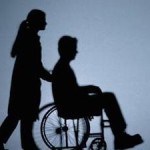Mindfulness, Meditation and PTSD
 Stress is inevitable and unavoidable. No matter how we look at it, stress is a part of our daily lives. Traffic, noise, pollution, work, family and loved ones are considered the common stressors we encounter every day. The way we handle and face all the stress is really important and essential because it is detrimental to our coping process as an individual, no matter how big or small it is. But not all people encounter only the common stressors mentioned above. Some have experienced traumatic events in their lives which employ a big impact on them.
Stress is inevitable and unavoidable. No matter how we look at it, stress is a part of our daily lives. Traffic, noise, pollution, work, family and loved ones are considered the common stressors we encounter every day. The way we handle and face all the stress is really important and essential because it is detrimental to our coping process as an individual, no matter how big or small it is. But not all people encounter only the common stressors mentioned above. Some have experienced traumatic events in their lives which employ a big impact on them.
According to http://en.wikipedia.org/wiki/Posttraumatic_stress_disorder, Posttraumatic stress disorder (PTSD) is a severe anxiety disorder that can develop after exposure to any event that result in psychological trauma.
Examples of traumatic events are: 
- Assault
- Domestic Abuse like child abuse
- Rape
- Kidnapping
- Natural disasters like earthquake, floods, tsunamis
- War
- Accidents such as car and plane accidents
- Sudden loss of a loved one
Typically, after a traumatic event, a person may feel sad, anxious and disconnected. They may even have bad dreams, feel frightened and tend not to forget the specific event. But we must remember that these responses toward a traumatic event are just normal reactions. These will all be resolved through time and with the help of family and some support groups. However, if these symptoms still remain after few weeks or months, or if the symptoms get worse, the condition can now be called, Post Traumatic Stress Disorder (PTSD). PTSD is an anxiety disorder which occurs to a person after experiencing a traumatic event. The cause of PTSD is still unknown. However, some studies show that PTSD can be brought by psychological, genetic, physical, and social factors. In addition, it affects the stress hormones and chemicals that send information to the brain. PTSD can also occur to people who have high levels of stress, those who have experienced previous traumatic events, those who have history of physical, sexual and substance abuse.
 PTSD differs from person to person. Although symptoms can appear just hours after the traumatic event, others experience it after days, weeks, months and to some, even after years. Symptoms of PTSD can appear abruptly, gradually and some can come and go over time. Some symptoms also just suddenly appear out of the blue. It can be triggered by words, images, noise or smell or something which has connection to the traumatic event.
PTSD differs from person to person. Although symptoms can appear just hours after the traumatic event, others experience it after days, weeks, months and to some, even after years. Symptoms of PTSD can appear abruptly, gradually and some can come and go over time. Some symptoms also just suddenly appear out of the blue. It can be triggered by words, images, noise or smell or something which has connection to the traumatic event.
Symptoms include:
- Flash backs (feeling as if the event is going to happen again)
- Nightmares
- Physical reactions like palpitations, rapid breathing, sweating
- Loss of interest on the usually liked activities
- Inability to recall events of the trauma experienced
- Feeling to detachment
- Difficulty of concentration
- Insomnia
- Hyper vigilance
- Suicidal thoughts
- Feeling of hopelessness
- Anger, irritability
Getting help to patients with PTSD is never easy because they may tend to perceive it as a weakness of themselves. It is important to remember that PTSD must be dealt as soon as possible. The most significant factor in the healing process of a person suffering from PTSD is family and support group guidance. Some patients don’t want to recall the events anymore because of the pain they feel whenever associated with the traumatic event. But they only way to overcome PTSD is to really face it and to learn to accept that it’s already a part of their past.
There are different types of treatment for PTSD such as:
1. Mindfulness-based fitness therapy/ training or Meditation (M-fit)
 M-fit was designed by former Army Captain Elizabeth Stanley for soldiers and veterans who experienced PTSD. It was a pilot project to see if mindfulness based training has a positive effect on them. Mindfulness is a Buddhist concept which keeps the mind focused on the present event. It is a yoga and meditation type of exercise which emphasizes on the body’s concentration to sensations, including the breathing in the midst of silence. Meditation involves series of calming methods to reduce the stress they have experienced. It gives an opportunity for an individual from a stressful and traumatic event to personally regulate his or her own stress level before it can lead to a more serious behavior.
M-fit was designed by former Army Captain Elizabeth Stanley for soldiers and veterans who experienced PTSD. It was a pilot project to see if mindfulness based training has a positive effect on them. Mindfulness is a Buddhist concept which keeps the mind focused on the present event. It is a yoga and meditation type of exercise which emphasizes on the body’s concentration to sensations, including the breathing in the midst of silence. Meditation involves series of calming methods to reduce the stress they have experienced. It gives an opportunity for an individual from a stressful and traumatic event to personally regulate his or her own stress level before it can lead to a more serious behavior.
2. Family Therapy
Family has been shown to be a very important support group of a patient undergoing PTSD. With family therapy, all family members have the chance to show to their family member their support to uplift the emotions of their family member suffering from PTSD.
3. Trauma-focused Cognitive Behavioral-Therapy
This therapy involves gradually exposing thoughts, feelings, sensations and other things related to the traumatic event. In this way, the patient will able to see things in a more balanced picture. This also includes identifying the things that keep the patient feel sad and be upset.
PTSD is indeed a serious disorder which should not be taken for granted. Recovery is a process which entails patience and understanding. It does not happen overnight. Painful memories don’t suddenly disappear with just a blink. If you know someone who is experiencing PTSD, be there for him and understand his feelings. Empathize, don’t sympathize.
Johanna Oosterwijk N.D.








